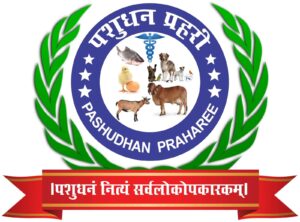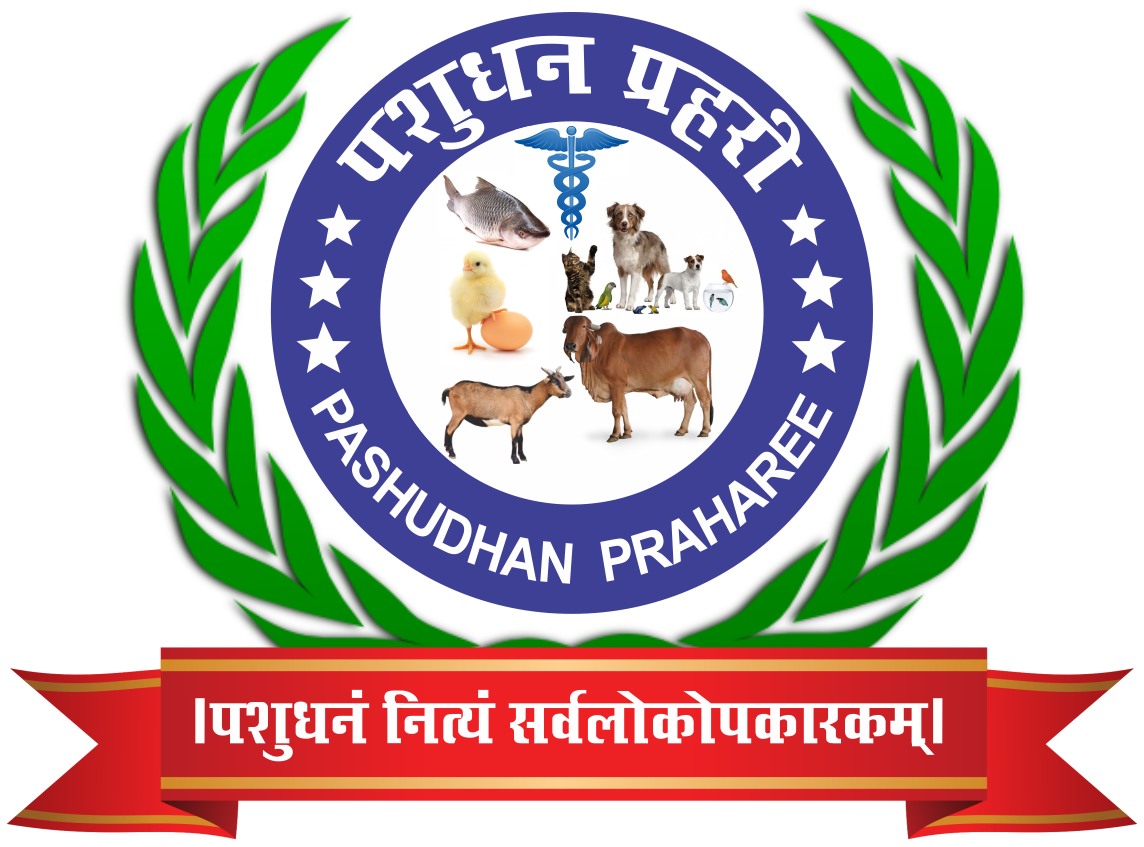Homeopathy in veterinary medicine: A Step towards One Health and Global Sustainability
Dr Muskan Sengar
Abstract
One Health is defined as “the collaborative effort of multiple health science professions, together with their related disciplines and institutions—working locally, nationally, and globally—to attain optimal health for people, domestic animals, wildlife, plants, and our environment”. Homeopathy act as holistic approach towards One Health concept and Global Sustainability goals. This alternative medical practice, based on the principle of “Similia Similibus Curentur” which means “like cures like,” involves using highly diluted substances to stimulate the body’s natural healing processes. It aids in human and animal health by considering physical, mental, and emotional aspects of well-being. It is used in various chronic and acute diseases, reduce reliance on antimicrobial drugs and other conventional drugs. With its emphasis on customized care and low side effects, homeopathy can help promote more ethical and sustainable animal care. It is inexpensive, easy to fabricate, environment friendly, nontoxic, and cost-effective, generates little biodegradable wastes, reduces dependence on medicines. This article includes selected case studies of use of homeopathy medicines in human and animal ailments and environmental pollution control. These cases also demonstrate improved recovery and reduced need for conventional medications, aligning with the goals of sustainable veterinary practice this concludes that integrating homeopathy into veterinary care supports the principles of One Health and contributes to global efforts for sustainable and ethical animal management. This step forward can benefit animal health, public health, and the environment.
Keywords: One Health, Homeopathy, Veterinary, Global Sustainability.
We are blessed to have a self-healing body and environment. Healing of the body occurs naturally by itself which is facilitated by immune system, vascular system, nervous system, cellular system. All the medicine which we take from outside either it could be allopathy, homeopathy medicine only hastens the healing process. Environment heals itself by natural processes like secondary succession; where ecosystems gradually recover after disturbances, like a fire or a landslide, allowing new species to colonize and rebuild the ecosystem. (Gaoming J., 2008) ,or through plants which absorbs the pollutants, through animals which help in seed dispersal, rock transform into new soil by erosion, reforestation and by many more methods. But these processes take lots of time to occur therefore it is necessary to protect and rejuvenate our environment and use medicine to heal the body. Unsustainable use of Earth’s natural resources, disruption of biodiversity, pollution, climate change, over use of antimicrobial drugs, emerging and remerging of zoonotic diseases, food safety, present ability to respond to pandemics this has led to decline of global health. Human populations are growing and expanding into new geographic areas. As a result, more people live in close contact with wild and domestic animals, both livestock and pets. Animals play an important role in our lives, whether for food, fiber, livelihoods, travel, sport, education, or companionship. Close contact with animals and their environments provides more opportunities for diseases to pass between animals and people. The earth has experienced changes in climate and land use, such as deforestation and intensive farming practices. Disruptions in environmental conditions and habitats can provide new opportunities for diseases to pass to animals. And these animals move to urban areas in search of new habitat. Also, the movement of people, animals, and animal products has increased from international travel and trade. As a result, diseases can spread quickly across borders and around the globe. (www.cdc.gov) For this reason, the concept of One Health has arrived to heal human, animal and environment all together at same time.
One Health is defined as “the collaborative effort of multiple health science professions, together with their related disciplines and institutions—working locally, nationally, and globally—to attain optimal health for people, domestic animals, wildlife, plants, and our environment”. The origins of One Health are centuries old and are based on the mutual dependency of humans and animals and the recognition that they share not only the same environment, but also many infectious diseases. It has been estimated that as many as 75% of human infectious diseases that have emerged or re-emerged in recent decades are zoonotic; that is, they originated in animals (McEwen S. A. and Collignon P.J. 2017) and are spreading and causing diseases in humans.
Homeopathy in veterinary medicine has gained attention as a potential approach aligned with the One Health concept and global sustainability goals. This alternative medical practice, based on the principle of “Similia Similibus Curentur” which means “like cures like,” involves using highly diluted substances to stimulate the body’s natural healing processes. Although the dilution law has been questioned as violating Avogadro’s law, it has shown significant improvement in cases involving human, animal, and environmental health (Tripathi U. et al. 2024). Homeopathy focus from particular symptoms to the whole patient. In order to heal human or animal body, we need to do more than treating symptoms only (Jensen W.T., 2015). Homeopathy works by stimulating a self-healing response such that there is no dependence on pharmacological energy to maintain a response, which usually occurs with allopathy medicine. In veterinary medicine, homeopathy is used to treat various conditions in animals, including chronic diseases, behavioral issues, and acute ailments. Scientists argue that it offers a holistic approach to animal health, considering physical, mental, and emotional aspects of well-being. Homeopathic medicines are inexpensive, easy to fabricate, environment friendly, nontoxic, and cost-effective. Very small amount of natural ingredients, no chemicals, and easy manufacturing process using simple equipments are required to produce these medicines. The little waste is also almost exclusively biodegradable. Additionally, homeopathic treatments may contribute to the overall health and resilience of livestock, potentially decreasing the need for intensive farming practices that can strain ecosystems. Therefore, it aligns well with sustainability goals. The One Health concept recognizes the interconnectedness of human, animal, and environmental health. Homeopathy in veterinary medicine potentially contributes to this approach by:
- Reducing antimicrobial resistance: Homeopathic treatments may decrease the use of conventional antibiotics, addressing concerns about antimicrobial resistance in both animals and humans.
- Minimizing chemical residues: Homeopathic remedies typically leave no harmful residues in animal products, potentially benefiting human health and the environment.
- Promoting animal welfare: The non-invasive nature of homeopathic treatments may reduce stress on animals during medical interventions. And Reduces dependence on intensive farming.
- Supporting sustainable farming practices: Homeopathy aligns with organic farming principles, potentially contributing to more sustainable agricultural systems. And reduces dependence on intensive farming.
- Economically sustainable medicine: Cost of production and sell is little such that poor people can also buy it.
- Environment friendly: homeopathic remedies never exhaust natural resources; there is negligible environmental impact and no question of over-consumption. Remedies meet the criteria for both renewable and sustainable sources of medicine. Compared to the waste stream produced by pharmacological manufacturing and by hospitals, the waste produced by a homeopathic pharmacy is infinitely small.(Kreisberg J. 2016)
- Food Safety: by minimizing the chemical residues in animal byproducts.
- Minimum side effects: there is minimum side effect as it is made from all natural ingredients with low potency, it does body’s metabolizing and purifying organs.
Case Studies done in Human, Animal and Environment:
- Research done by Mohammad S. N. et al. 2024 in Cyanobacteria (Raphidiopsis raciborskii) found in seawater all over the world, which produces toxins named saxitoxin (STX) which is dangerous to living beings were treated with homeopathy medicine Isotherapic 200cH, Nitric acidum 200cH and Mercurius solubilis 30cH. They found that these medicine slowed down the bacteria’s growth by up to 95% and protect brine shrimp embryos (Artemia franciscana) from the harmful effects of STX.
- Research done by Mahesh et al. 2018 in 10 human patient suffering from dengue fever were treated with Pyrogenum 200C, Lycopodium 200C, Arsenicum album 200C, Acidum phosphoricum 200C, Thlaspi bursa pastoris 200C, Ptelea 200C. Different medicine were given in different patient according to condition have shown complete recovery from dengue.
- Research done by Gadugu S. et al. 2014 in children ranging from 0 to 15 year suffering from Japanese Encephalitis (J.E.), an endemo-epidemic acute encephalomyelitis were treated with Belladonna 200 on 1, 2, 3 days one dose each, Calcarea Carb 200 on 10th day and Tuberculinum 10 M on 25th day as a prophylactic drug. Found reduction in cases from 343 cases reported in 2000 with 72 deaths, to 18 cases but no death in 2002 and no cases reported in 2003 and 2004.
The Government had officially published the statistics and acknowledged the efficacy of homeopathy. This is the first major involvement of homeopathy in the field of prevention of epidemic diseases in our country.
- Research done by Pareek et al. 2020 in 30 Clinical isolates collected from a hospital uses Senega, Sulfur, and Lobelia Inflata against Klebsiella pneumonia showed antibacterial effect.
- Research done by Zeise and Fritz (2019). Found that with homeopathic drugs it was possible to reduce the antibiotic use by up to 75% and have positive long-term effect in treating bovine mastitis.
Homeopathy is a potent branch of medicine which can lead the World towards One Heath and Global Sustainability. By utilizing natural products, minimum dosage, little waste, non-toxic, environment friendly medicines and minimizing chemical load on animal byproduct, homeopathic treatments may reduce the environmental impact of conventional veterinary pharmaceuticals. Homeopathy also reduces dependence on antimicrobials, leading to reduction of antimicrobial resistance, boosting immunity and self-heal of the body. It promotes organic farming, decreasing the need of intensive farming. One health interconnects human, animal and environment. Homeopathy plays a crucial role in global sustainability by applying a holistic approach in human and animal physical, mental, and social well-being and environment integrity. Thus, homeopathy may offer alternative or supportive treatments that are safe and environmentally friendly. By using homeopathy in veterinary medicine it is a step forward towards the benefit of animal health, public health, and the environment.
Reference:
- Gadugu S, Nyapati SR, Sastry GL. An Open Observational Study on Efficacy of Miasmatic Prescription in the Prevention of Japanese Encephalitis. Homeopathy 2014;103:78-9.
- Gaoming J., 2008, https://dialogue.earth/en/nature/2226-letting-nature-heal-itself.
- https://www.cdc.gov/one-health/about/index.html.
- Kreisberg J. 2016, https://aurumproject.org.au/homeopathy-sustainability-environmental-healing.
- Mahesh S, Mahesh M, Vithoulkas G. Could Homeopathy Become An Alternative Therapy In Dengue Fever? An Example of 10 Case Studies. J Med Life 2018;11:75-82.
- McEwen S. A. and Collignon P.J. 2017, Antimicrobial Resistance: a One Health Perspective. American Society for Microbiology, Washington, DC: 521-547. doi:10.1128/microbiolspec.ARBA-0009-2017.
- Mohammad S. N. et al. 2024. Environmental Homeopathy: Homeopathic Potencies Regulate the Toxicity and Growth of Raphidiopsis raciborskii (Cyanobacteria) and can be Tracked Physico-Chemically. Part 1: Biological Results. Environmental Homeopathy. Part 1: Biological Results: 3-17.
- Pareek S, Bhargav A. In-vitro Evaluation of Antibacterial Activity of Homoeopathic Preparations on Klebsiella pneumoniae. Int J Health Sci Res 2020;10:176.
- Tripathi U., Bahurupi Y., Jasrotia A. 2024. Integration of Homeopathy in One Health. Journal of Comprehensive Health 12;6-11.
- Woolhouse MEJ, Gowtage-Sequeria S. 2005. Host range and emerging and reemerging pathogens. Emerg Infect Dis 11:1842–1847.
- Zeise J, Fritz J. Use and Efficacy of Homeopathy in Prevention and Treatment of Bovine Mastitis. Open Agric 2019;4:203-12.
- Vockeroth W. G.Veterinary homeopathy: An overview. Can Vet J Volume 40, August 1999: 592-594.



